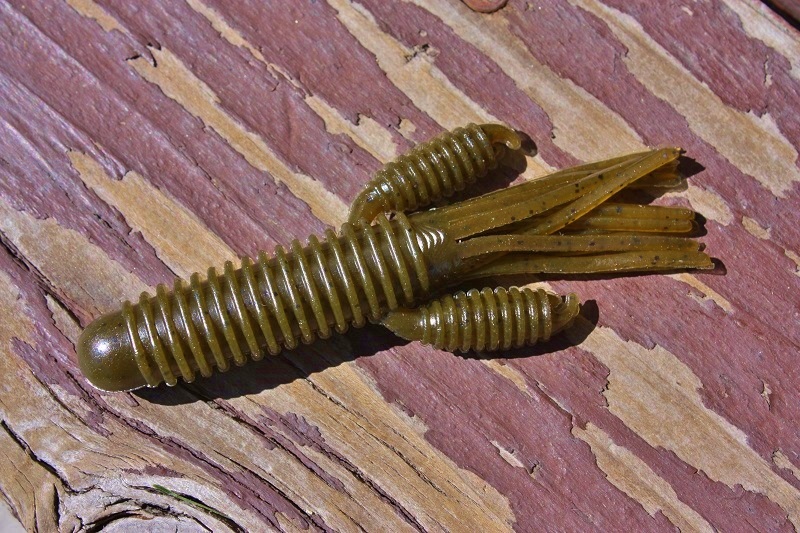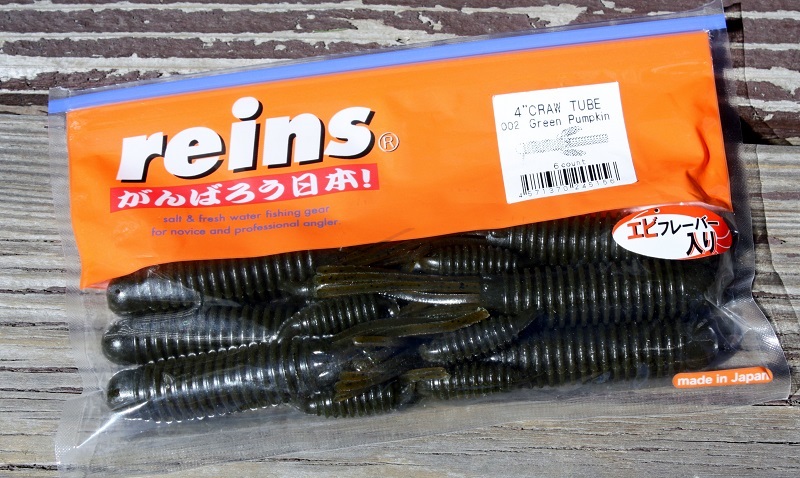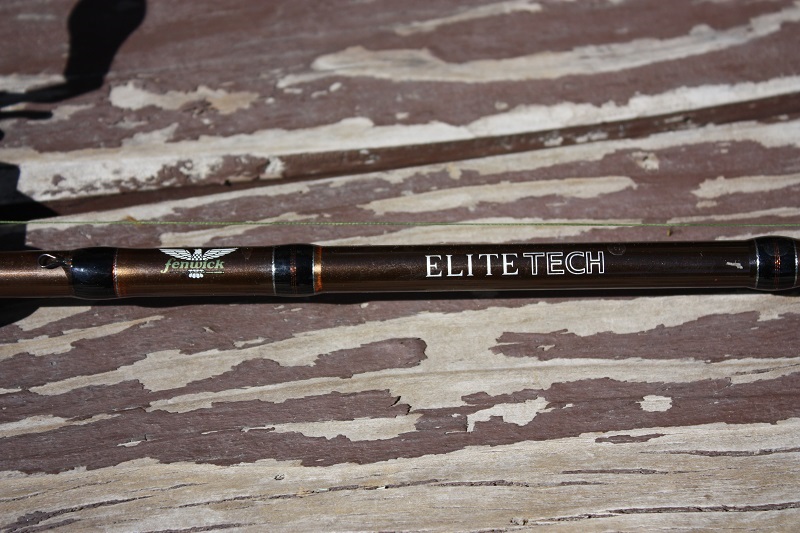There is no denying that flipping and pitching is one of the most exciting ways to hunt for bass. The immediate and upfront action of the technique involves medium-heavy to heavy gear, ultra-fast high speed reels and baits that are designed for a knockout.
In clear water situations, the approach is similar, but the baits tend to be smaller.
In fact, there are lures with a successful history that are making a comeback in this arena, like a tube-style bait.
Anglers have flipped and pitched tubes for more than 15 years, but as of late, these baits have morphed into creature-like designs, with appendages and ribs making their way into the final mold.

STAND OUT PRESENTATIONS
In 2014, Reins released a new four-inch flipping and pitching bait called the Craw Tube. The pinchers are round, ensuring that the bait falls without spinning on each and every cast. While I prefer fishing the bait straight out of the package, other anglers prefer to remove the arms.
Regardless of personal preference, this tube bait allows stands out in two ways.
First, this tube allows a Texas-rig presentation. Anglers can often find that a soft plastic tube will bunch up and render itself useless due to the thin plastic design. Reins addressed that issue and made the bottom of the bait flat.
Second, when fishing behind others, anglers will find this tube falls much differently than a jig or other Texas-rigged plastics. These small, but essential details give the bait an edge when fishing high-pressured situations.
TARGETS
Docks, logs and rocks are all ideal targets for clear water flipping and pitching. Both docks and other wood cover provide shade and an ambush opportunity.
Fish on docks may relate to the side with the most shade, or they might position towards the back of the dock when there are no perceived threats. Other times, when a lake receives a lot of pressure, those fish may leave the area altogether.
I recommend anglers flip and pitch to the back corners of the dock first, because by only targeting the front of the dock, the angler may pull those fish away from the cover. By flipping or pitching to the back first, this leaves the angler with a higher percentage of hook ups by covering more square feet of the target.
Rocks provide year-round cover for crayfish, so the bait choice is natural, but the majority of fish do not see a tube-style bait with this technique as often as other baits.

COLOR SELECTION
Choosing natural colors, such as green pumpkin is ideal. If the water is stained, or night fishing is an option, black and blue laminate is a go-to choice.
BITE DETECTION
While pitching to rocks, an easy entry into the water is recommended. Unlike a jig where a double tap might alert you to the bite, the Craw Tube tends to be engulfed. Watching your line and picking up to feel pressure are the preferred methods to detecting a strike. The key is to be accurate with your cast and deliver the bait quietly.
APPROACH
When flipping and pitching, many anglers work their area much too fast.
A slow approach to the target is very important. Anglers tend to rush through their locations with the trolling motor on high; but flipping and pitching in clear water, requires a little more patience that some fail to recognize.
A submerged tree may be home to panfish, bass and a host of other renters. By only hitting one side and moving on, you are leaving fish behind for the competition.
Coming off plane and quietly approaching your target is highly recommended. Try not to wash the area out, as sediment, vegetation and stirring up the environment can make visually seeing fish difficult to do.
In a low-pressure situation, or on a windy day, fish often look downwind. When it comes to fast food for largemouth and smallmouth, heading into the wind and targeting cover and structure allows you to regulate your boat’s approach with greater control. Better control means higher quality casts and presentations. 
GEAR
When fishing around docks, many hazards present themselves such as cables, chains and rope. All of these threaten your line and landing ratios. I have had great success with using a braided main line, such as 65-lb Smackdown from Seaguar. Pair it with your favorite fluorocarbon, along with a heavy rod such as the 7’ 5”, heavy Fenwick Elite Tech, and the rod’s extra-fast action will help to turn fish up and away from these dangers while you maintain a stealthy leader.
When choosing a flipping weight, pegging a ½-oz tungsten weight is my starting point. While many go for a lighter weight, I prefer to get a reaction bite with the Craw Tube by repeatedly bugging the bass into biting.


 Advertising
Advertising